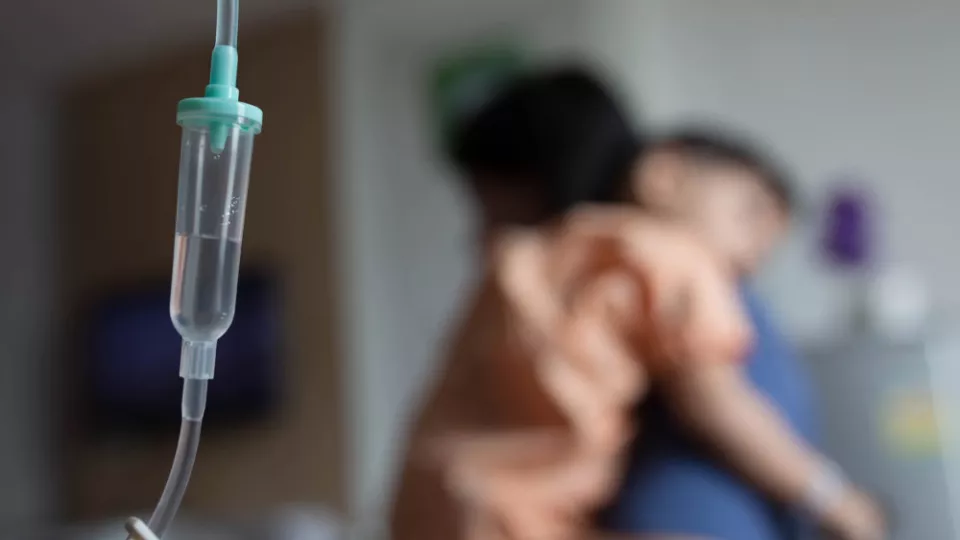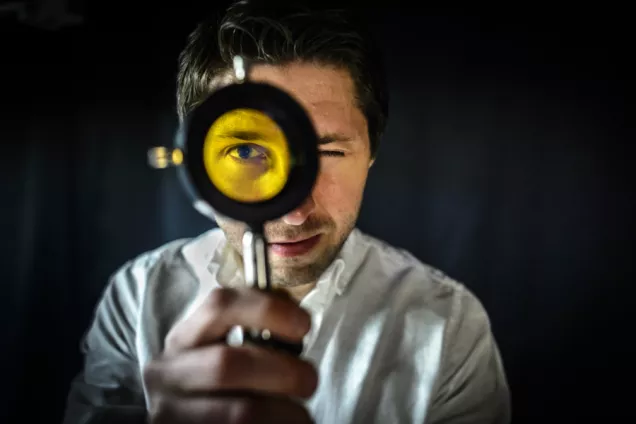Children suffer from other types of cancer than adults and the determining factor is the genetic lottery, not the lifestyle they have pursued during their short lives.
“It is no longer as easy to find the right treatment for children with cancer in order to further increase survival, but we are increasingly looking at what is wrong in the cancer cell”, says Lars Hjorth, paediatric oncologist and associate professor of paediatrics.
Cancer’s genetic deviations
Lars Hjorth walks through the long corridors of the Department of Paediatrics and Adolescent Medicine 64 at Skåne University Hospital in Lund and says hello to colleagues, patients and their parents. His working days are divided between work on paediatric oncology, research and meeting childhood cancer survivors at the Late Effects Clinic in Lund.
Four out of five children who develop cancer survive. However, for at least two-thirds of them, the cancer treatment they go through causes serious complications that often do not manifest until adulthood. There are also children who cannot withstand the treatment and die from it rather than the primary disease.
“In the 1970s and 80s, before I started as a paediatric cancer doctor, every survivor was a success story, but as time has gone on expectations have increased: now everyone is to survive. But unfortunately we are not there yet.”
To get there, Lars Hjorth believes that we must learn more about cancer’s genetic deviations in order to tailor treatments.
“We would like to be snipers, but it is more of a scattershot approach against the body even though the amount of radiation treatment is far less and much milder than before.”
Radiation treatment is the medical approach used today to try to eradicate cancer, increasingly with the use of lower doses or no radiation treatment at all for young children. For intractable diseases, the doctors increase treatment using more intensive methods such as cytotoxic drugs. But there is still a lot more to do, not least in finding milder treatments for those with a good prognosis, considers Lars Hjorth. How do you cope with meeting families in crisis?
“I knew at a very early stage that I wanted to be a paediatric doctor and be on the side of the children. Adults can speak for themselves – but children can’t. It feels very special to become close to the children and their families and be allowed into their inner world. It is often inspiring, but sometimes it is tragic and saddening.”
When our survivors get older some of them unfortunately start to weaken.
Survival rate
Even though today 90 per cent survive a disease such as lymphatic leukaemia, there are children and parents who are informed that nothing more can be done.
“I try to be as updated as possible and if there is something that we cannot deal with, it feels comforting that we have done our very best and that no-one else could have done anything very differently. We cannot save all the children – we cannot perform magic.”
However, the survival rate for all types of childhood cancer has considerably improved since the 1970s and this is mainly due to changes in treatments using radiation and cytostatic drugs. In the 1960s, only 20 per cent of children who developed cancer survived. When the treatments became more effective they often entailed serious consequences. If as a child you had radiation treatment on your back, the vertebrae did not grow as they should, if the sex glands were irradiated this could lead to future infertility, and if the brain was irradiated this could have serious cognitive effects such as lower IQ, endurance and concentration. For children, defeating their cancer at any price could have an extremely high cost.

“In the 1970s and 80s every survivor was a success story, but as time has gone on expectations have increased: now everyone is to survive. But unfortunately we are not there yet.”
Cooperating across borders
A lot has been learned from how we treated children with cancer previously and there is a greater understanding of the strength gained from cooperating across borders in order to obtain a sufficiently large patient base for research into late complications. Every year just over 60 000 people in Sweden develop cancer and 350 of them are children and adolescents up to 18 years-old. Accordingly, childhood cancer is rare and competes with the major cancers such as breast cancer, prostate cancer, lung cancer and bowel cancer regarding funding and research in relation to the major pharmaceutical companies. In 2008, Lars Hjorth and other colleagues established PANCARE (Pan-European Network for Care of Survivors after Childhood and Adolescent Cancer) in Lund in order to identify the gaps in doctors’ and researchers’ knowledge and to be stronger through cooperation. The aim was that every child who survived cancer in Europe would receive the best possible long-term follow-up.
“We knew there was a great deal to do in many European countries, including Sweden, to give childhood cancer patients better care and better follow-ups. There were considerable differences between countries regarding how much help these patients received. PANCARE has helped to illuminate the problem in European countries”, states Lars Hjorth. “The main aim is not only research, but also to raise awareness of the support and follow-up that is needed.”
Serious complications in adulthood
One of the goals is improved treatment strategies that are individually adapted based on the genetic factors involved. More children are to have greater possibilities to survive and not at any price, but for a reasonable price without multiple side-effects that adversely affect their future lives. This knowledge has had an impact in Sweden. In 2009, the national cancer strategy contained 300 pages, but less than three pages were devoted to childhood cancer. In 2016, a new healthcare programme for follow-ups of adult former childhood cancer patients was signed by all healthcare regions in Sweden, even though there are difficulties in the south-east region.
“Looking back ten years, I am proud of the work done within PANCARE and all the research projects within the network that have generated new knowledge that has helped to draw up new guidelines.”
If you have had cancer as a child, you can develop serious complications in adulthood. This is why the Late Effects Clinic at Skåne University Hospital in Lund was established. Lars Hjorth works there one day a week and together with an adult oncologist and a nurse he maps the now adult people who have been ill as children and tries to establish an overall medical picture. What treatments has the patient had? What are the potential complications? What type of follow-up is needed? Together they assemble the puzzle and highlight potential dangers.
The Late Effects Clinic tries to follow up survivors every five years and act as support and a link to primary healthcare.
“There are not enough doctors at our healthcare clinics with sufficient knowledge to be able to see that a patient’s current problems may be late effects of having cancer as a child”, says Lars Hjorth, who holds lectures for doctors at district healthcare clinics to increase expertise.
He also considers that the Sweden’s Social Insurance Agency and Public Employment Service need an increased understanding that the older a childhood cancer survivor becomes, the less energy and endurance they have left and that perhaps support and help is needed to make changes in their working life.
“When our survivors get older some of them unfortunately start to weaken – they are perhaps not able to work full-time or in the occupation they had previously”, states Lars Hjorth. “At the Late Effects Clinic we try to reach out with knowledge so that children who survive cancer get the best help when they become adults.”
In conclusion, Lars Hort has a strong wish:
“Many companies give to charities such as the Swedish Childhood Cancer Foundation, and we are, of course, very grateful for that, but it would also be tremendous if employers could be aware of the needs of our former patients and make positions available for them within their organisations.”

